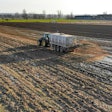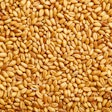
Multiple jurisdictions have begun to eye more stringent traceability requirements around feed safety and sustainability, but consumers may be even more demanding.
In the decades since the European Union (EU) established its food and feed safety program, the benefits of traceability have become well known to feed industry leaders, according to Alexander Döring, secretary general, European Feed Manufacturers’ Federation (FEFAC).
“Everyone said the same thing in the beginning: All of this will have extra costs,” Döring said. “And there’s no doubt there had to be a lot of investment done but the returns, we can now tell, really outweigh the initial investment.”
Traceability, Döring said, has driven an increase in efficiency and cut losses due to court claims for feed producers. And now that the industry seems to be getting a handle on feed safety, he hopes traceability might bring some of the results to a new challenge: sustainability.
Consumers in the EU and around the world increasingly harbor concerns about the sustainability of animal agriculture, and have begun to seek out products they believe are better for the planet. While Döring believes the feed industry lagged somewhat behind societal concerns about food safety, he said he believes the industry is ahead of the curve on the sustainability question — it only needs a way to prove to consumers and NGOs that this is the case.
Traceability, he and other industry advocates believe, might be just the solution feed and animal agriculture needs.
“Although existing FDA (U.S. Food and Drug Administration) regulations require feed traceability to help ensure safety of products … the ability to trace products in response to an identified concern has become increasingly important to maintain confidence in company brands and meet customer expectations,” David Fairfield, senior vice president for feed at the National Grain and Feed Association (NGFA) in the U.S., said in an email. “Major food retailers are requesting more and more information from their supply chains on how food is produced and sourced. These types of requests are influencing traceability initiatives.”
Tracking sustainability
As consumers and food retailers have begun to demand more information about the products they purchase, food producers, in turn, have been to seek greater information on their environmental footprint, according to Gerd Diebold, business development manager at Cloudfarms, a digital livestock management platform recently acquired by BASF. Meeting their expectations, he said, doesn’t necessarily require new technology — information about how a product was produced can be encoded in a barcode just as easily as any other data point.
The barrier to sustainability tracking, Diebold said, is that the needed data is not always collected in the first place.
“It’s not so much software or technical solutions,” Diebold said. “It’s the connectivity between all players in the value chain.”
The need for data collection has led to cooperative efforts by trade organizations and governments alike. The NGFA, for example, formed a Climate Change and Sustainability Task Force in April, with plans to provide preliminary recommendations for industry and policy leaders this fall. In June, the U.S. Food & Drug Administration (FDA) solicited information on new traceability technology through a challenge to entrepreneurs and innovators, calling on them to develop low-cost traceability tools that could be used primarily to enhance food safety.
While the results of the challenge are not yet available, the FDA expressed particular interest in technologies to digitize food production data. And regulators in the EU are expected to look to food safety laws as the inspiration for implementing their Farm to Fork sustainable food strategy.
But even with regulatory actions already in the works, Döring said he suspects the market may beat regulators to the punch. Producers can already earn a premium in some markets if their product presents a smaller environmental footprint.
“To get that reward, [a producer] must be able to document that their foods are produced with a lower footprint than average,” he said. “We are convinced this will not take long. There’s a lot of data produced at the farm level. It’s a matter of aggregating it, of making it available.”
Limits of technology
Steve Buehne, a sales engineer for machinery manufacturer CMP Beta Raven, sees the potential value in a database capable of tracing feed ingredients back to their place of origin. Pair something like that with a radio frequency identification tag or similar, and in the not-too-distant future, feed mill machinery might be able to automatically read all known data on any ingredients in a particular vicinity.
But he also sees the challenges that stand in the way of such a future: Such a database would be massive and difficult to assemble. Determining how to track commodities such as soybeans, which get mixed together in silos and shipping containers regardless of their origin or other attributes, would be difficult. And without standardization across the industry, it might not be particularly effective.
“It would be really neat if for every feed mill, the code number for XYZ ingredient was the same at every site. It would make a lot of sense,” Buehne said.
This could present an appropriate role for regulation in the future, Diebold said. National or even global standards, if they could be agreed upon, could significantly simplify tracking sustainability data.
However, creating standards for sustainability won’t be as simple as it was for food safety, Döring said. Food safety initiatives benefited from clear parameters and relatively simple goals. Standards could be set to protect against dangerous levels of contaminants, and traceability served to locate where a product came from and where it was going to limit the spread of an outbreak.
Sustainability comes with a more complex set of variables — multiple environmental pollutants, water, land and energy use. In the EU, the contribution of soy production to deforestation in South American rain forests has traditionally been a focal point of concern, one Döring believes the industry is getting a handle on. Now, carbon emissions have emerged as a global threat.
Unlike food safety, where traceability came with a clear end goal in mind — the elimination of outbreaks of disease — sustainability will likely be a continuous process of gradual improvement.
“It’s a progression over time,” Döring said. “It’s a journey that will and can never end.”
















